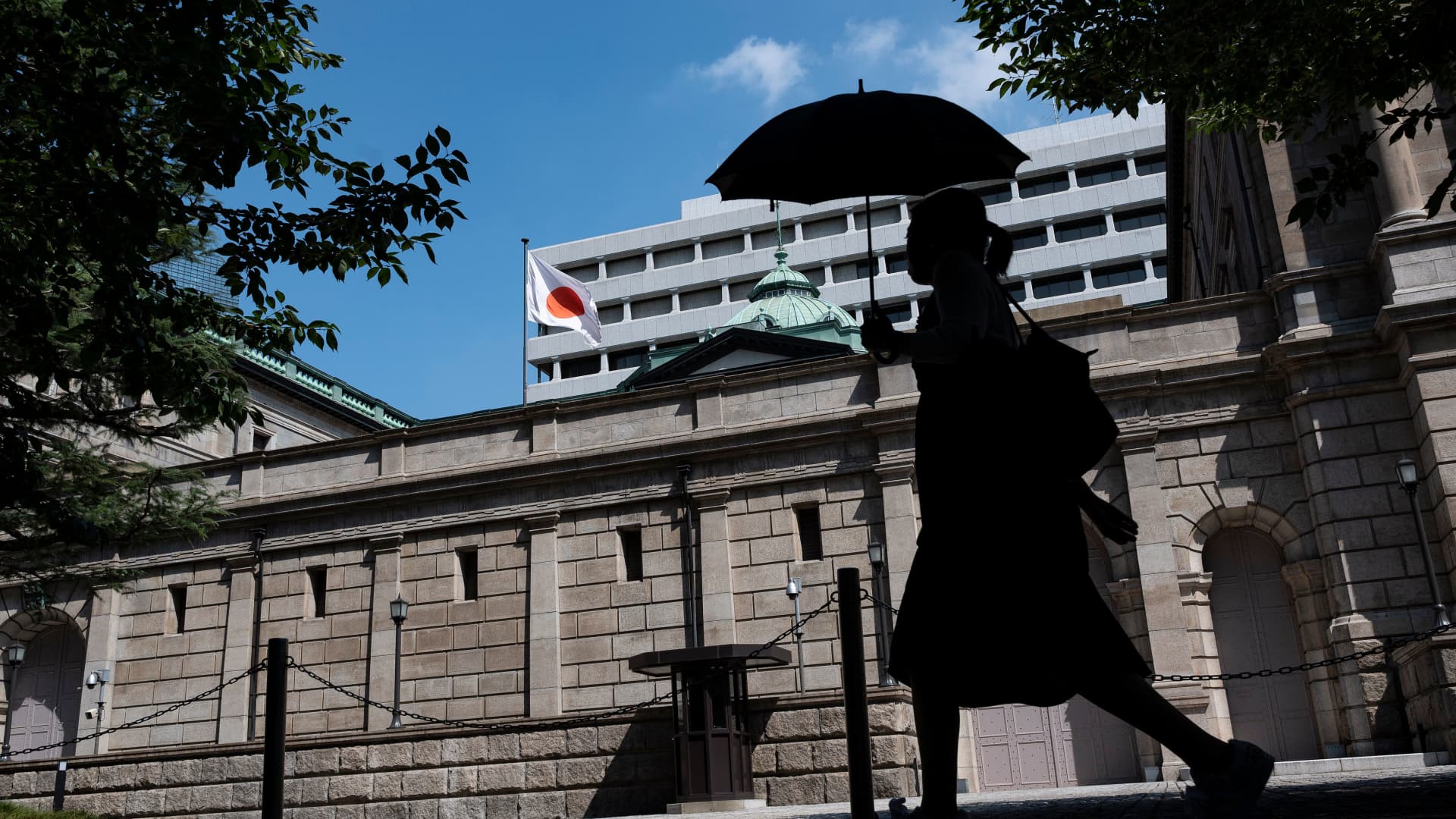The Seoul skyline.
Mongkol Chuewong | Moment | Getty Images
Asia-Pacific markets were set to mostly climb Thursday, tracking gains on Wall Street as a possible thaw in U.S.-China trade war fuels investor optimism.
Japan's benchmark Nikkei 225 was set to extend the previous day's gains to open higher, with the futures contract in Chicago at 35,410 while its counterpart in Osaka last traded at 35,440, against the index's last close of 34,868.63.
Australian markets were also set to open higher, with futures tied to the S&P/ASX 200 last seen at 7,946, compared to the index's last close of 7,920.5
Futures for Hong Kong's Hang Seng index stood at 22,069, little changed from HSI's last close of 22,072.62.
South Korea's GDP contracted 0.1% in the first quarter of 2025, according to advance figures released Thursday, missing the 0.1% rise expected by a Reuters poll.
U.S. futures were subdued after the major U.S. indexes posted a second straight winning day. S&P 500 futures were up 0.1%, while Nasdaq 100 futures traded nearly 0.1% higher. Futures tied to the Dow Jones Industrial Average lost 45 points, or 0.1%.
Overnight stateside, the three major averages closed higher on hopes that U.S.-China trade tensions could soon ease. President Donald Trump also signaled he does not plan to remove Federal Reserve Chair Jerome Powell from his post as central bank leader.
The Dow Jones Industrial Average added 419.59 points, or 1.07%, to close at 39,606.57. The S&P 500 climbed 1.67% to end at 5,375.86, and the Nasdaq Composite rallied 2.50% to settle at 16,708.05. All three indexes posted back-to-back gains.
— CNBC's Lisa Kailai Han and Brian Evans contributed to this report.
Stocks end Wednesday higher, extending rally from day before
The major averages ended Wednesday higher, extending their rally from Tuesday.
The Dow Jones Industrial Average pulled back from its high of the day, when it was up more than 1,100 points. The blue-chip index still managed to climb 419.59 points, or 1.07%, to settle at 39,606.57.
The S&P 500 added 1.67%, closing at 5,375.86, while the Nasdaq Composite gained 2.50% and finished at 16,708.05.
— Lisa Kailai Han
Bessent says there's opportunity for 'big deal' with China
Scott Bessent, U.S. Treasury secretary, at the IIF Global Outlook Forum during the International Monetary Fund and World Bank Spring meetings in Washington, D.C., on April 23, 2025.
Kent Nishimura | Bloomberg | Getty Images
Treasury Secretary Scott Bessent said the U.S. and China have the opportunity to strike "a big deal" on trade.
During an appearance at the Institute of International Finance in Washington, D.C., he said: "If they want to rebalance, let's do it together."
"This is an incredible opportunity. I think if Bridgewater founder Ray Dalio were to write something, he could call it a beautiful rebalancing," he added.
— Dan Mangan
China indicates openness to trade talks with U.S.
In the latest development on potential de-escalation of the global trade war, China signaled it was open to trade talks with the U.S.
However, the nation also underscored that it would not negotiate if the U.S. continued to make threats.
"China's attitude towards the tariff war launched by the U.S. is quite clear: We don't want to fight, but we are not afraid of it. If we fight, we will fight to the end; if we talk, the door is wide open," said Foreign Ministry spokesperson Guo Jiakun, according to Dow Jones.
— Lisa Kailai Han
Trump hints China tariffs could come down
Trump late Tuesday said he is willing to take a less confrontational approach to trade talks with China, noting that the current 145% tariff on Chinese imports is "very high, and it won't be that high. … No, it won't be anywhere near that high. It'll come down substantially. But it won't be zero."
This is a departure from the stern rhetoric on U.S.-China trade coming from the White House in recent weeks. These tensions have contributed to U.S. markets tumbling this month. The S&P 500 is down 5% in April.
— Fred Imbert

 1 month ago
116
1 month ago
116




























 English (US)
English (US)